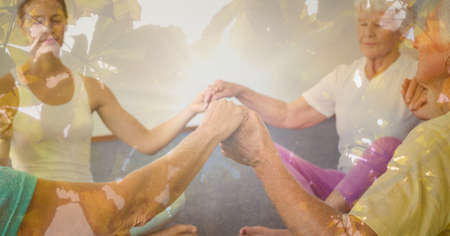1. Introduction to Return-to-Work (RTW) Programs in the United States
Return-to-Work (RTW) programs are structured plans developed by employers and healthcare professionals to help employees safely transition back to work after an injury or illness. In the United States, these programs play a critical role in supporting both workers and businesses, especially when it comes to hand injuries that can significantly impact daily work tasks.
What Are RTW Programs?
RTW programs are designed to help employees who have been sidelined by injury or illness re-enter the workforce as quickly and safely as possible. These programs often include modified duties, gradual return schedules, and close collaboration between occupational therapists, physicians, employers, and insurers. The goal is to accommodate the employees current physical abilities while promoting recovery and productivity.
Purpose of RTW Programs
The main objectives of RTW programs are:
- To reduce time away from work for injured employees
- To minimize the financial impact on both employees and employers
- To promote a culture of support and inclusivity in the workplace
- To ensure compliance with federal labor laws such as the Americans with Disabilities Act (ADA) and Family and Medical Leave Act (FMLA)
Importance in American Workplace Culture
In the U.S., work is often seen not just as a source of income but also as a central part of personal identity and community involvement. When someone is unable to work due to a hand injury, it can affect their self-esteem, social life, and financial security. RTW programs demonstrate an employer’s commitment to their team’s well-being and can improve employee morale and loyalty.
Key Benefits of RTW Programs
| Benefit | Description |
|---|---|
| Faster Recovery | Gradual work reintegration supports healing and reduces long-term disability risks. |
| Lower Costs | Reduces workers’ compensation expenses for employers. |
| Legal Compliance | Keeps companies aligned with ADA and FMLA requirements. |
| Employee Retention | Shows care for staff, increasing job satisfaction and retention rates. |
| Positive Workplace Culture | Creates an environment where employees feel supported during tough times. |
How Occupational Therapists Fit In
Occupational therapists (OTs) play a vital role in RTW programs by evaluating hand function, recommending adaptive tools or modifications, and helping employees regain essential skills needed for their specific job tasks. By working closely with both employers and injured workers, OTs help bridge the gap between medical recovery and successful workplace reintegration.
2. The Role of Occupational Therapists in Hand Rehabilitation
Occupational therapists (OTs) play a vital role in return-to-work (RTW) programs, especially for individuals recovering from hand injuries. Their expertise goes beyond basic rehabilitation—they focus on helping people regain the skills needed to get back to work safely and confidently. OTs use a combination of clinical knowledge, creative problem-solving, and an understanding of job demands to guide their patients through the recovery journey.
What Makes Occupational Therapists Unique?
Unlike other healthcare providers, OTs are specially trained to look at the whole person, not just the injury. They consider how a hand injury affects daily tasks, work duties, and even social participation. OTs help bridge the gap between medical recovery and real-world function by:
- Assessing both physical and functional abilities
- Customizing treatment plans based on individual job requirements
- Educating clients about safe work practices and injury prevention
- Collaborating with employers for workplace modifications
Key Qualifications of Occupational Therapists in Hand Rehab
To provide effective hand rehabilitation within RTW programs, OTs have specialized training and skills, such as:
| Qualification | Description |
|---|---|
| Certified Hand Therapist (CHT) | A credential that shows advanced knowledge in treating hand and upper limb conditions. |
| Activity Analysis Skills | The ability to break down job tasks to understand where challenges might occur after an injury. |
| Ergonomics Training | Expertise in adapting tools, equipment, or workstations for improved safety and comfort. |
| Pain Management Techniques | Training in strategies to reduce pain so clients can participate more fully at work. |
| Counseling Skills | The ability to support mental health needs during the RTW process. |
How OTs Assess and Treat Hand Injuries for RTW Success
When supporting someone with a hand injury, OTs start with a thorough assessment. This includes measuring range of motion, strength, sensation, and fine motor skills. They also observe how well the client performs specific work tasks—like typing, using tools, or lifting objects. Based on these findings, OTs design personalized therapy programs that may include:
- Therapeutic exercises to restore movement and strength
- Practice with real or simulated work tasks
- Splinting or adaptive devices for protection and function
- Education on safe body mechanics and proper technique
- Gradual re-introduction to work activities to build confidence and endurance
Collaboration is Key
OTs often act as liaisons between the worker, employer, physician, and case manager. By communicating openly with all parties involved, they ensure that everyone understands the goals and progress of rehabilitation. This team approach helps create a supportive environment for successful return-to-work outcomes.

3. Evidence-Based Hand Rehabilitation Strategies
Occupational therapists (OTs) play a crucial role in supporting employees as they return to work after hand injuries or surgeries. Their approach is rooted in evidence-based practices, which means using strategies and tools proven by research to be effective. Here’s a look at some of the main techniques, adaptive equipment, and modalities OTs use to help clients regain hand function for work tasks.
Therapeutic Techniques Used in Hand Rehabilitation
OTs tailor therapy plans to each person’s unique needs, job requirements, and injury severity. Some common evidence-based therapeutic techniques include:
| Technique | Description | Workplace Application |
|---|---|---|
| Task-Specific Training | Practicing real-world work tasks to improve skills and confidence | Simulating typing, tool use, or assembly line tasks |
| Strengthening Exercises | Progressive exercises to build grip and finger strength | Using resistance bands or therapy putty for manual laborers or office workers alike |
| Sensory Re-education | Retraining nerves and brain connections for better sensation and coordination | Handling objects with different textures, sizes, and weights |
| Range of Motion (ROM) Activities | Gentle stretching and movement routines to restore flexibility | Reaching, grasping, and releasing objects used on the job |
| Pain Management Techniques | Tactics like desensitization or graded exposure to reduce discomfort | Gradually increasing workload tolerance over time |
Adaptive Equipment for Work Readiness
If someone is struggling with certain tasks due to pain or limited movement, OTs recommend adaptive equipment designed for workplace success. Examples include:
- Ergonomic keyboards and mouse devices: Help office workers reduce strain while typing or clicking.
- Grip aids: Special handles or foam tubing can make it easier to hold tools or utensils.
- Splints or braces: Provide support during recovery, especially for repetitive tasks.
- Cutting boards with stabilizers: Useful for food service workers or those who need extra stability.
- Power tools with modified handles: Beneficial for construction or manufacturing workers with reduced grip strength.
Modalities That Support Recovery
Certain physical agent modalities may be part of an OT’s toolbox. These are used alongside hands-on techniques to boost healing and comfort:
- Heat Therapy: Warm packs can loosen stiff joints before activity.
- Cryotherapy: Cold packs help control swelling after repetitive use.
- Ultrasound or Electrical Stimulation: Sometimes used in clinics to encourage tissue repair or muscle activation (always under professional supervision).
The Occupational Therapist’s Collaborative Approach
The key to successful return-to-work programs lies in collaboration. OTs often coordinate with employers, safety managers, and healthcare providers to create a safe, gradual plan for resuming job duties. By combining therapeutic exercises, adaptive tools, and supportive modalities—all grounded in research—occupational therapists empower workers to regain independence and thrive on the job.
4. Collaboration with Employers and Case Managers
The Importance of Teamwork in Return-to-Work Programs
Effective return-to-work (RTW) programs for individuals recovering from hand injuries rely on strong collaboration between occupational therapists (OTs), employers, case managers, and other healthcare providers. Working together ensures that each person’s recovery and transition back to work is safe, smooth, and tailored to their unique needs.
Clear Communication Strategies
Good communication is the foundation of successful collaboration. OTs must provide clear updates about a worker’s progress and abilities while listening carefully to concerns from employers and case managers. Regular meetings—whether in-person, by phone, or through email—help keep everyone informed and on the same page.
Common Methods for Effective Collaboration
| Method | Description | Benefits |
|---|---|---|
| Case Conferences | Scheduled meetings including OTs, employers, case managers, and sometimes the employee. | Ensures all parties share information and discuss next steps together. |
| Progress Reports | Written updates from the OT summarizing recovery milestones and recommendations. | Keeps everyone updated on what the worker can do safely at each stage. |
| Email/Phone Updates | Quick check-ins or clarifications as needed between team members. | Addresses urgent questions or changes in work status promptly. |
| Onsite Visits | The OT visits the workplace to assess job demands and recommend modifications. | Helps create realistic plans for gradual RTW and adapts tasks as needed. |
The OT’s Role in Facilitating Collaboration
Occupational therapists act as liaisons between healthcare teams and the workplace. They explain medical terms in plain English, help employers understand restrictions, and advocate for the worker’s needs. OTs also guide case managers on appropriate timelines for job tasks and suggest accommodations or adaptive equipment if necessary.
Tips for Building Successful Partnerships
- Be proactive: Reach out early to establish relationships with all team members.
- Use simple language: Avoid jargon when explaining medical or therapy details to non-medical team members.
- Respect confidentiality: Share only information necessary for workplace safety and accommodation planning.
- Create shared goals: Make sure everyone agrees on what a successful RTW looks like for the worker.
- Encourage feedback: Invite questions and suggestions from employers and case managers to improve the process.
Cultural Considerations in U.S. Workplaces
In American workplaces, open communication and respect for individual privacy are important. OTs should be sensitive to company policies, Americans with Disabilities Act (ADA) guidelines, and workers’ compensation requirements when making recommendations. By working as a team, OTs, employers, case managers, and healthcare providers can help employees return to work with confidence after a hand injury.
5. Workplace Modifications and Advocacy
Evaluating Job Demands
Occupational therapists (OTs) play a key role in helping clients safely return to work after a hand injury. The first step is evaluating the physical and cognitive demands of the client’s specific job. This includes observing the work environment, reviewing job descriptions, and talking with both the employee and employer. OTs look for tasks that may be difficult for someone with a hand impairment, such as lifting, gripping, typing, or repetitive motions.
| Job Task | Potential Challenge | Assessment Strategy |
|---|---|---|
| Typing/Data Entry | Reduced finger dexterity | Simulated keyboard tasks, timed trials |
| Lifting Boxes | Limited grip strength | Grip strength testing, observation of lifting technique |
| Assembly Line Work | Pain with repetition | Work sampling, fatigue assessment |
| Customer Service (Phone) | Difficulty holding phone/pen | Mock calls, ergonomic review of workstation |
Recommending Workplace Accommodations Under ADA
The Americans with Disabilities Act (ADA) requires employers to provide reasonable accommodations so that employees with disabilities can perform their jobs. OTs help by suggesting practical modifications tailored to each client’s needs. Some common recommendations include:
- Ergonomic tools such as padded grips or adaptive keyboards
- Voice-to-text software for those with limited typing ability
- Adjustable workstations or desks to reduce strain on hands and wrists
- Scheduling changes to allow for more frequent breaks or shorter shifts during recovery
- Task reallocation—shifting certain duties to other team members temporarily or permanently if needed
Sample Accommodation Table
| Need Identified | Possible Accommodation |
|---|---|
| Pain during prolonged typing | Split keyboard, speech recognition software |
| Trouble lifting objects over 10 lbs. | Lifting aids, job duty modification to avoid heavy lifting |
| Fatigue from repetitive motion | Rotating tasks, extra rest breaks, anti-fatigue mats |
Advocating for Client Rights in the Workplace
An important part of an OT’s role is making sure clients know their rights under laws like the ADA. This includes educating clients about how to request accommodations and helping them communicate effectively with employers. OTs can also provide documentation that explains medical restrictions and suggests specific workplace modifications.
- Education: Teach clients what kinds of accommodations are available and how to ask for them.
- Mediation: Support conversations between employees and employers to find solutions that work for everyone.
- Documentation: Provide clear reports outlining functional limitations and recommended accommodations.
- Follow-Up: Check in after returning to work to ensure accommodations are effective and make adjustments as needed.
The Occupational Therapist’s Advocacy Checklist:
- Assess the client’s work environment and job demands thoroughly.
- Identify potential barriers to successful return-to-work.
- Create a list of tailored accommodation recommendations.
- Educate the client about ADA rights and self-advocacy strategies.
- Liaise with employers or human resources as needed.
- Monitor progress after return-to-work and adjust plans if necessary.
This hands-on approach helps ensure clients feel empowered while supporting safe, productive participation at work after hand rehabilitation.


